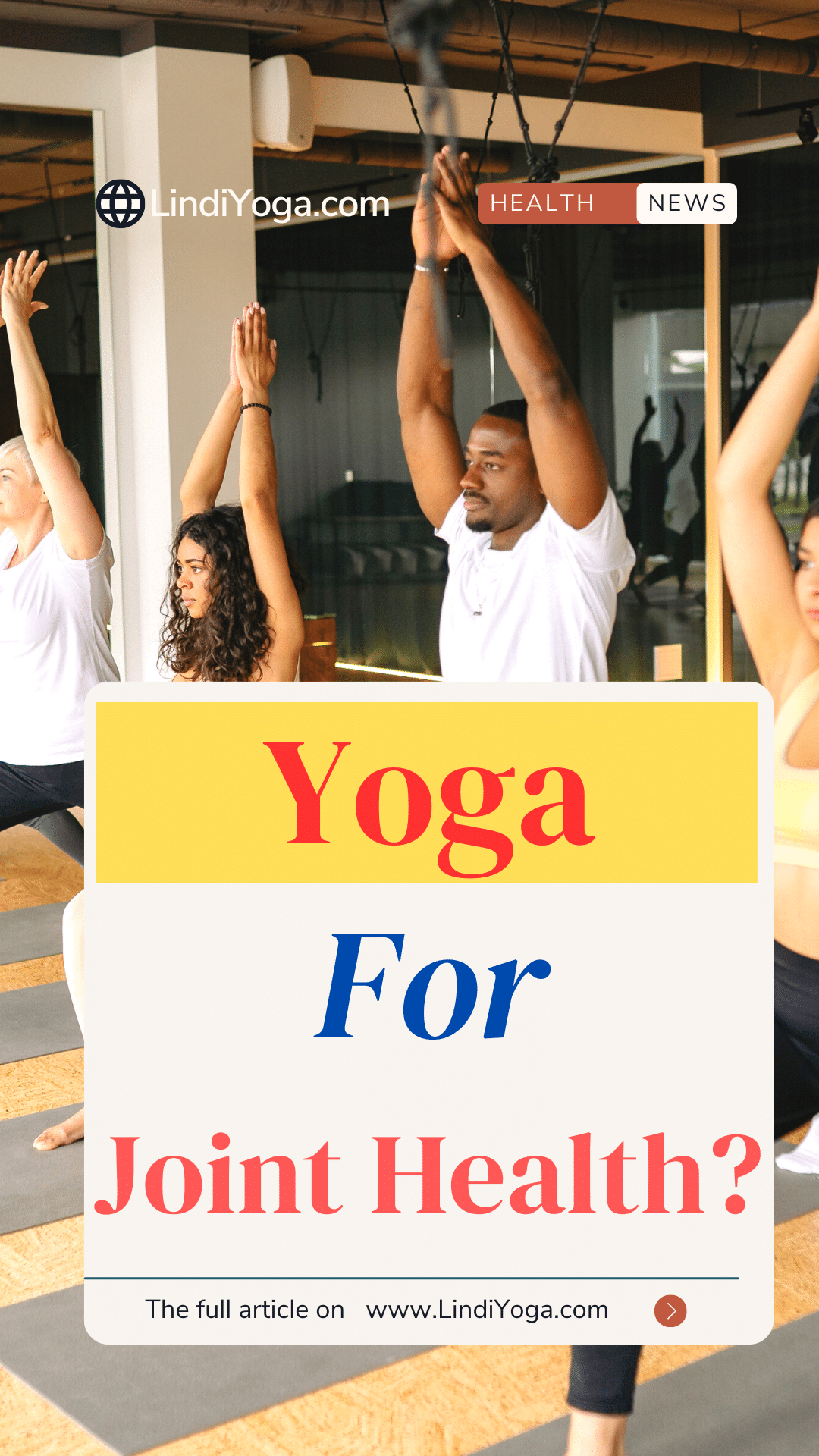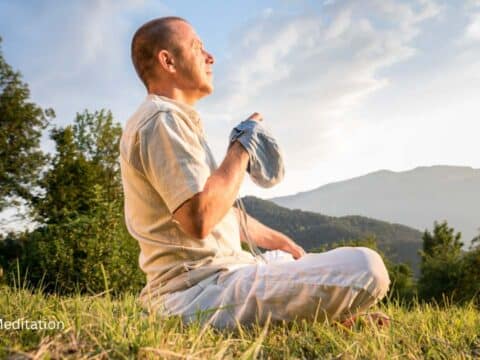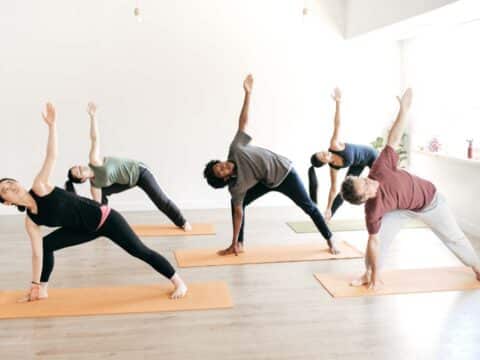What are the benefits of yoga for your joint health? In this article, we’ll learn about how yoga can help promote healthy joints. So, let’s dive in and discover what it takes to feel great from the inside out!
In this piece, we’ll check out all the ways doing yoga may be able to support your joints’ health and flexibility.
We’ve got moves that range from delicate stretches to challenging postures – so you get an idea of everything available which could keep your joints feeling their best function-wise.
Are you looking to find relief from joint pain or improve your overall well-being? Join us as we explore the many wonders of yoga!
Yoga for Joint Health?
When we are trying hard to take care of ourselves and keep up a healthy lifestyle, one key component that is often forgotten about is mobility. Our joints play an essential role in how well our whole body moves and functions.
Yet unfortunately they get neglected until something goes wrong with them. Fortunately, there’s a way you can help promote their health – through yoga!
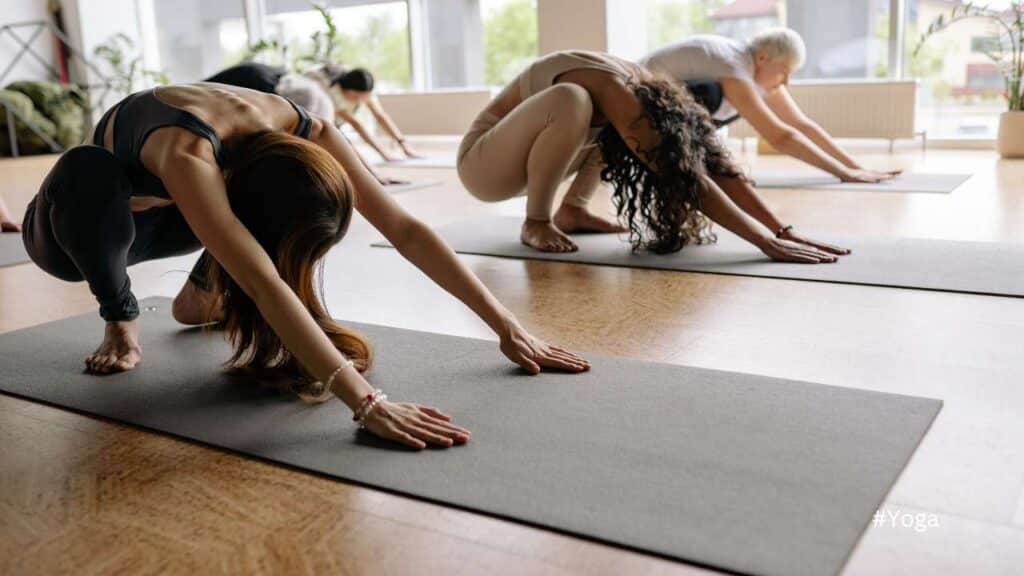
Importance of Joint Health
Role of Joints in the Body
Joints are what link our bones together, so we can move and stay flexible. They have various tissues such as cartilages, ligaments & synovial fluid which support to cushion and lubricate them.
Without healthy joints doing basic activities like walking or lifting would be a real battle for us.
Impact of Joint Problems
When your joint starts having problems it could take away from your quality of life rapidly. Diseases such as bursitis, arthritis or tendinitis leave you feeling painfulness, stiffness and inflammation around those areas. These issues even reduces one’s mobility plus makes everyday duties hard to complete.
Benefits of Maintaining Joint Health
By taking care of yourself you can reap a variety of rewards. Doing exercises such as yoga enhances joint flexibility and helps prevent stiffness in joints plus also strengthens the muscles around them.
Plus doing yoga relaxes you which decreases pain or inflammation associated with your joints too! And not only that but going through poses and movements encourages better circulation throughout your body – leading to a healthier supply nutrients for all those hardworking joints.
Yoga Poses for Joint Health
Overview of Yoga Poses
Yoga poses, also known as asanas, can be specifically tailored to target mobility. These poses focus on gently stretching and strengthening the muscles around the joints. It’s improving their range of motion and overall function.
By incorporating these poses into your yoga practice, you can reap the benefits of enhanced health.
Standing Poses
Standing poses, such as Warrior I and II, promote joint stability and strength in the lower body. These poses engage the muscles surrounding the hips, knees, and ankles. It is helping to improve their flexibility and reduce the risk of injury.
Additionally, poses like Tree pose and Half Moon pose challenge balance and stability, enhancing joint proprioception and coordination.
Seated Poses
Seated poses, like Bound Angle pose and Seated Forward Bend, target the hips, knees, and ankles, allowing for a deep stretch and release of tension in these areas. These poses can help alleviate tightness and stiffness, improve joint mobility, and enhance the flexibility of the lower body.
Supine Poses
Supine poses, such as Bridge pose and Happy Baby pose, engage the muscles around the spine, pelvis, and shoulders, improving their strength and flexibility. These poses are particularly beneficial for individuals with back and shoulder issues. They can help alleviate pain and improve joint mobility.
Inversion Poses
Inversion poses, such as Downward Facing Dog and Shoulderstand, allow for the reversal of blood flow and provide relief to the joints in the lower body and spine. These poses help to increase circulation, reduce inflammation, and promote joint health by improving flexibility and stability.
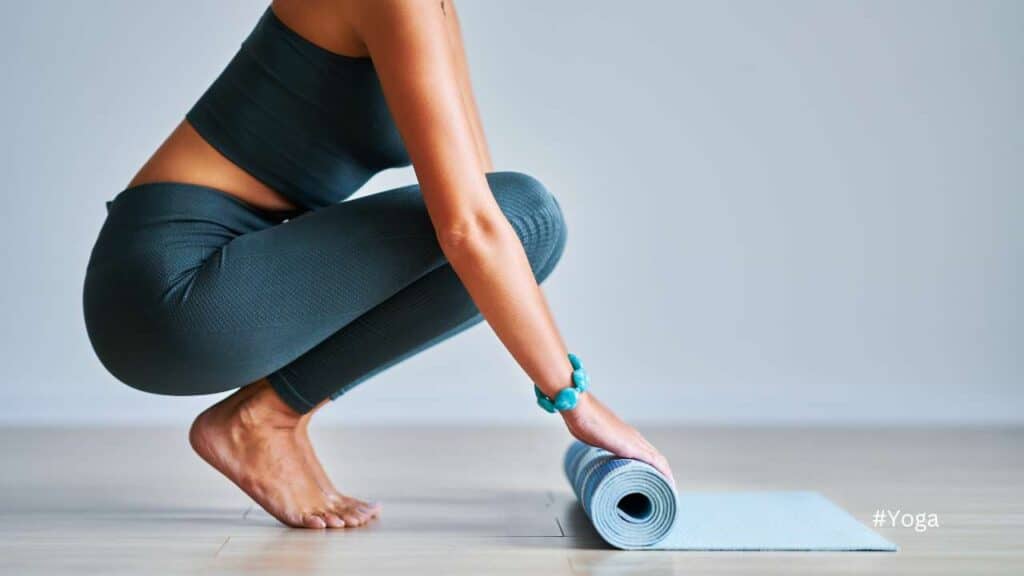
Precautions and Modifications
Respect Your Body’s Limitations
Yoga can be great, but it has to be approached with caution. Everybody is different so something that works for one person may not work the same way for another. Note how your body feels during yoga practice and don’t push yourself beyond what you think are your limits.
Modifying Yoga Poses if You Have Joint Conditions
If you have joint issues before starting yoga, make sure to modify poses accordingly as some of them could worsen existing conditions? What modifications do I need to consider in these cases?
Before giving yoga a try, it’s important to recognize potential issues that may arise when practicing. For instance, people with knee troubles can benefit from utilizing props like blocks or bolsters in order to support their joints and reduce the amount of pressure on them while doing poses.
The same goes for anyone dealing with shoulder pain – straps might be beneficial or they could choose gentler variations which don’t put as much strain on those areas.
It is highly recommended you talk to your healthcare professional before starting any kind of workout routine (including yoga). They are equipped with knowledge tailored especially for you and will be able to tell you what movements/poses are safe given your individual case!
More Ideas for Practicing Yoga to Improve Joint Health Maintaining Proper Posture and Alignment
When doing yoga, it’s important that you concentrate on keeping your posture and alignment proper. Doing this will make sure the right muscles and joints are being engaged which maximizes the advantages of each pose while making sure there is no risk of getting injured.
Listening carefully to experienced instructors’ cues about how to align your body as well as using mirrors or videos can help refine what you do so that poses are performed effectively. Additionally, depending upon personal condition they can suggest any essential changes or other exercises too.
Breathing Exercises
Yoga isn’t only about physical postures, it also includes breathing techniques – called pranayama. These can have significant effects on your wellbeing. Slow and controlled breaths help to relax body & mind, which makes poses easier and more flexible.
If you carefully coordinate your breath with each yoga pose then the advantages of them become even greater for your overall joint health.
Pay Attention To Your Body
When doing Yoga don’t forget one important principle – self-awareness! Always stay aware of how exercises affect you; if anything causes discomfort or pain just skip that posture or adjust it according to what suits best to you!
Yoga should never be a source of pain or anguish. If you trust your body and recognize its boundaries, you can enjoy the advantages yoga has to offer without putting yourself in peril.
Sticking with It
Continuity is necessary if you want to get the full benefits of yoga. With regular practice, your joints will become more mobile over time as well as stronger and more elastic.
It’s quite feasible that spending just minutes each day on basic poses could make an enormous variation. Adding some yoga sequences into your daily schedule could help ensure lasting joint health down the line.
Research and Expert Opinions on Yoga and Joint Health Scientific studies have revealed the beneficial impacts of yoga. Various investigations launched at trustworthy organizations, published in high-caliber journals, indicated that regular practice of yoga can lessen joint pain as well as inflammation.
It’s leading to improved mobility in addition to functioning for those suffering from arthritic conditions or other related problems. Also worth mentioning is a boost in overall quality of life among such individuals who are practicing it consistently!
Expert Quotes about Impactful Outcomes due To Practicing Yoga
Loren Fishman, an orthopedic physician and yoga teacher, remarks that “Yoga is really a powerful approach to preserving joint well-being.” The mixture of soothing stretching, strengthening exercises as well as relaxations helps keep the joints in good condition.
Other Ways To Preserve Joint Healthiness
Nourishment for Painful Joints
In addition to practicing yoga exercise, sustaining proper diet is essential too. Foods abundant with omega-3 fatty acids such as fish plus nuts coupled with antioxidants supplied by fruits and vegetables will help reduce inflammation. Maintaining sufficient hydration levels together with reducing excessive consumption of processed foods along with sugary beverages also brings positive results.
Changes In Lifestyle For Better Joint Wellness
Alongside yoga practice and nutritious food selection choices make other lifestyle changes beneficial too! Keeping up a healthy bodyweight decreases burdensome pressure on our own joints since additional weight puts extra strain upon them.
Having regular physical activities like walking or simply swimming can assist support better movement while simultaneously strengthen muscle groups which bolster our very own joints enabling us much less pain going forward through life’s various challenges!
Moreover avoiding stressing out same joint over any extended period of time; taking occasional breaks when necessary during lengthy spells regarding standing/seating postures safeguards and preserves your current overall health further…
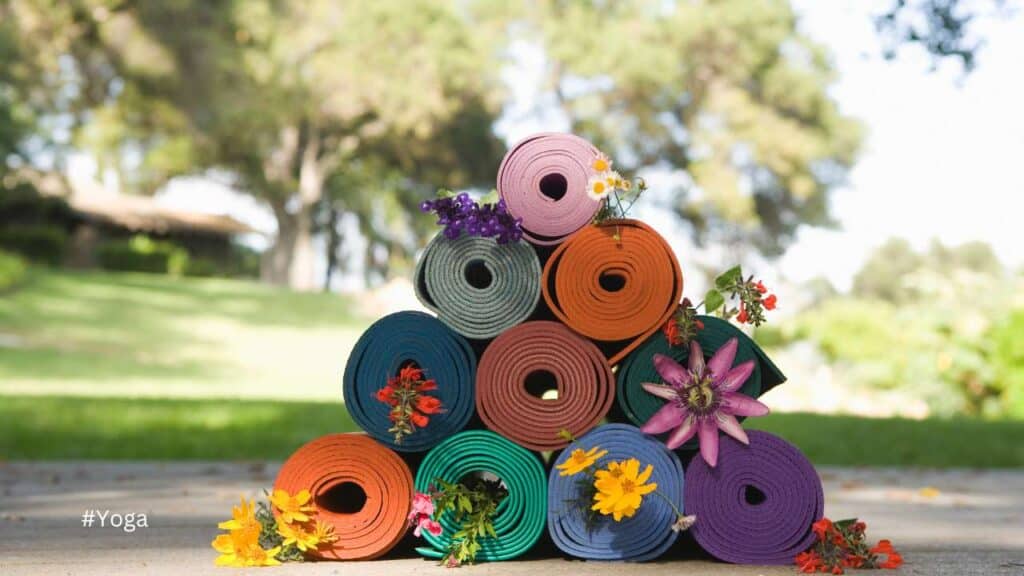
Common Misconceptions about Yoga and Joint Health
Yoga as a Magical Remedy for Joint Issues
Even though yoga can be very helpful, it’s important to clear out the assumption that it serves as an all-in-one solution for joint problems.
Rather than using yoga alone we should think of it being part of broader plan which also involves medical treatment and other changes in lifestyle choices. Yoga shouldn’t replace getting professional help when necessary.
Potential Hazards from Going Too Far
When we practice safely within our physical limitations there are no issues with practicing yoga but if you aren’t careful then overexertion risks become real. So how do you make sure these don’t happen? Be mindful about what your body is telling you!
Stretching yourself too far or trying out a challenging pose without proper prep or direction can cause joint issues and other troubles. It’s essential to move forward slowly. Pay attention to your body, and get support from an accredited yoga teacher in order to reduce the chances of getting hurt.
Summary
In summary, doing yoga – which promotes general well-being – is a great way for keeping joints healthy. Doing different postures should help with being more flexible, reducing pain associated with them , as well as promoting their overall healthiness .
Stepping onto a yoga mat is not just about taking steps towards better joint health, but also imporving muscle strength and core stability. Doing gentle poses like Hatha Yoga can help lubricate the joints making movement easier and more comfortable.
The bow pose, plank posture, forward fold are some of the many which specifically work on strengtheningthe muscles around your knees, hips shoulders as well as ankles.
The beauty in practising these postures lies in how they involve carefully rotating and bending the body without too much strain being put on any one particular area! Question arises why we should pay attention to our ankle joint when it comes to physical exercise?
Well cause even its often overlooked by us all yet at times leads to severe pain if neglected for long duration. Thus doing regular exercising with proper form helps keep those ligaments strong and nimble ready for motion anytime required of them.
Yoga is an exercise that can be tailored to fit your unique needs. For example, if you have back pain, poses like the forward fold can provide protection for your lower spine.
In addition, if you suffer from osteoporosis or arthritis of any kind then practicing gentle yoga through postures such as the bound angle pose may offer relief from discomfort and increased mobility.
A qualified yoga instructor or teacher will guide you on how best to perform these positions correctly; ensuring proper placement – so make sure your left foot runs parallel with the floor in warrior stance.
When it comes to improving joint health, yoga can be an incredibly helpful tool. A certified instructor can help you achieve better form throughout the poses so that your joints are in proper alignment and receive maximum benefits from each pose.
They’ll provide pointers on how to support yourself with props for more comfortable positioning or teach you ways of clasping your hands into a bound angle pose.
In addition to asanas (yoga postures), core engagement is also important in plank position – having strong abs helps keep the hips aligned while doing a downward facing dog. Breathing techniques must not be forgotten either!
Yoga breathing will promote relaxation and alleviate stress regardless of whether someone is suffering from severe arthritis or limited mobility due to stiff muscles.
But don’t forget about all other potential perks. Think beyond just improved joint stability when considering regular practice. Yogic exercises have many positive effects on overall wellness enabling body awareness, inner balance and serenity too!
So why wait any longer? Get onto that mat today if possible – listen carefully to what your body needs and explore different options during sessions so as maximize both comfort level and benefit range for optimal quality life experience!
